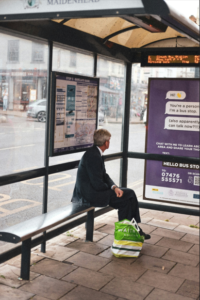
Critical thinking is self-directed, self-disciplined, self-monitored, and self-corrected. In other words, it is a thought process that involves the evaluation, assessment, and reinterpretation of your own or others’ ideas and thought processes. Critical thinking requires effort and dedication, but pays dividends for the time invested.
Critical thinking comes into play in a wide variety of circumstances. As a citizen of a democracy, it is important to think critically and do background research each time an election is coming up or when there is a news story about which you want to be more informed. As a student, you want to think critically about near term options, such as what courses to take, and longer term decisions, such as how to plan your degree and whether the degree you’re planning should be directed toward current employment, future employment, or your own academic interest that may or may not be related to a current or potential career. [2]
Critical thinking involves analysis, or breaking something (a concept, an argument, a piece of information) down into its parts in order to understand and evaluate it, as a prelude to accepting or rejecting it. You’re expected to think critically when you’re asked to analyze an article for a college assignment, for example, and offer your own opinion on its validity. You also think critically when you analyze real-life situations such as moving your residence, changing jobs, or buying a car.
View the following videos on critical thinking, which further define the concept and offer some steps to apply in order to think critically and solve problems.
The “5 Tips” video offers one (of many) ways to consider something critically:
- formulate your question
- gather your information
- apply the information (consider biases, assumptions)
- consider the implications
- explore other points of view
All of the videos emphasize the need to consider a question, problem, action, or issue consciously and planfully, breaking it into its parts and considering the parts, before putting them back together with a reasoned solution or multiple potential, reasoned solutions.
Just for fun, here’s a short video on assumptions, a concept related to critical thinking.
Learning Activity for Critical Thinking
Introductory Level

This is a quote from the page on Transferable Skills in this text:
“Thinking about and dealing with skills can help you maximize your education. Do a Google search for “skills employers want” and you’ll see lists of skills such as communication, analytical ability, teamwork, flexibility, quantitative skills, resilience, and more. There is a lot of similarity in these lists of skills on different sites such as Indeed.com, NACE (National Association of Colleges and Employers), LinkedIn, the U.S. Department of Labor, and many colleges and universities.”
Consider this assertion critically:
- Do you accept the evidence provided?
- What assumptions, if any, are inherent in the information?
- What biases, if any, are inherent in the information?
- Is there enough data to back up the assertion?
- Is that data from valid sources?
- What else do you need to ask to consider this assertion critically?
In a 2-3 page essay, analyze this assertion, applying the questions above and any other questions you ask and answer. Include sources that you consult to validate your analysis.
Learning Activity for Critical Thinking
Advanced Level
First, read and view information below in the section on Lateral & Creative Thinking.

Then, write a brief essay (4-5 pages) applying critical, lateral, and creative thinking skills to the solution of a real problem. Use the following format:
- Identify a problem at work or with a community group, or any group or situation in which you are involved (family, friends, daily commuters on the same bus, etc.). In a few paragraphs, explain the problem.
- In another few paragraphs, analyze the problem. What are the component parts of the problem? Are there inherent assumptions and/or biases involved?
- In another few paragraphs, offer some possible solutions that you can identify immediately and logically. Identify and discuss the pros and cons of each immediate and logical solution.
- Then, try to think differently about the problem by applying lateral and creative approaches. You may want to identify the positives, negatives, and interesting aspects of the problem. You may want to consider solutions that could only happen “in your wildest dreams.” Brainstorm, and/or create a persona and ask yourself “how would X approach this problem?” Apply these and techniques suggested by the article and videos to posit at least one or more different solutions to the problem. Explain these different solutions in another few paragraphs, and posit what would need to be in place in order to enact this more creative solution.
- Conclude by reflecting on this exercise in a final few paragraphs. What did you learn about your own thought processes by completing this activity? How might you apply what you learned to your academic studies?
Submit: essay applying thinking skills
Lateral & Creative Thinking

Lateral and creative thinking work hand-in-hand with critical thinking as you solve problems.
Lateral thinking offers a somewhat structured way to generate new ideas, while creative thinking opens the door to all possibilities.
While critical thinking is needed in identifying and starting to solve problems, lateral and creative thinking help generate multiple, different, and often unexpected solutions.
Lateral Thinking
One way to deal with assumptions and problem-solving is to develop your lateral thinking skills. Lateral thinking includes a conscious generation of alternative solutions, and a conscious questioning of assumptions.
Read the article What is Lateral Thinking? and watch the following video on lateral thinking.
How can we think laterally, when our brains are programmed to think in terms of patterns and linear movement from point A to point B? Play on that proclivity for patterns and apply a pattern to help you think outside of the box.
Make three columns. Title the first “positives,” the second “negatives,” and the third “interesting.”
List out the positives, the negatives, and what’s interesting about the following situation: What if all cars were painted yellow? What would be positive, negative and interesting about this situation?
Critical and Lateral Thinking are about being proactive in identifying assumptions and biases, and about using reasoning and your own insights to make decisions. Lateral thinking actually bridges critical and creative thinking, and provides an additional way in which we can consider information.
What is a problem that you have in your life right now that you can use lateral thinking to solve? List the positives, negatives and interesting points for yourself.
Creative Thinking
Creative thinking helps you solve problems in unexpected or new ways.
Read the article on Creative Thinking Guide for People Who Need Results and view the videos below for a fuller definition of creative thinking.
Example of Creative Thinking

One really interesting example of creative thinking deals with a solution to dementia and Alzheimer’s patients wandering off.
You can link to a podcast explaining this creative solution on a page entitled The Bus Stop.
Then read a reflection on this solution from a medical student in the blog post, A Wait for the Bus.
Learning Activity for Lateral & Creative Thinking
Introductory Level
Apply lateral and creative thinking to the scenario in the following training video entitled “Training Video When the Phone Rings (Example of Poor Receptionist Skills):
After viewing the video, apply lateral and creative thinking skills to the situation.
Put yourself in the role of supervisor of this employee, the woman who left at the start of the video.
The boss mentioned to you the assistant’s lack of appropriate protocol in taking messages and his need to apologize to the client. You need to relay the information to the assistant so that it does not happen again.
Instead of simply focusing on the negative and giving her a rebuke, consider the positive and interesting aspects of this employee and the situation (you’ve already identified the negative). How can you use the positive and interesting aspects of the employee’s behavior to help her develop into a stronger administrative professional?
More generally, what creative actions can you take to train newer employees and ensure that a situation like this does not happen again?
Write a brief analysis (3-4 pages) applying lateral and creative thinking skills to this situation.
Submit: analysis
Learning Activity for Lateral & Creative Thinking
Advanced Level
Choose one of the following options.
Option 1
Read the article “Your Brain on Creativity” from Psychology Today.
Apply lateral and creative thinking concepts to consider how the information in this article might be presented in an alternative, perhaps divergent way. Then create that presentation, to represent the main ideas from the article in another way.
Submit: the presentation
Option 2
Identify a problem at work or with a community group. Apply concepts and strategies of lateral and creative thinking, and generate at least 4 potential alternative solutions to the problem, an obvious one and others that are not so obvious.
Submit: a written proposal offering these solutions. Include the following sections in the proposal:
- statement of problem
- discussion of the obvious solution and what it involves
- discussion of the less obvious solutions and what they involve
- analysis of which solution is the best and why (which can include analysis of why the other solutions are not as good)

